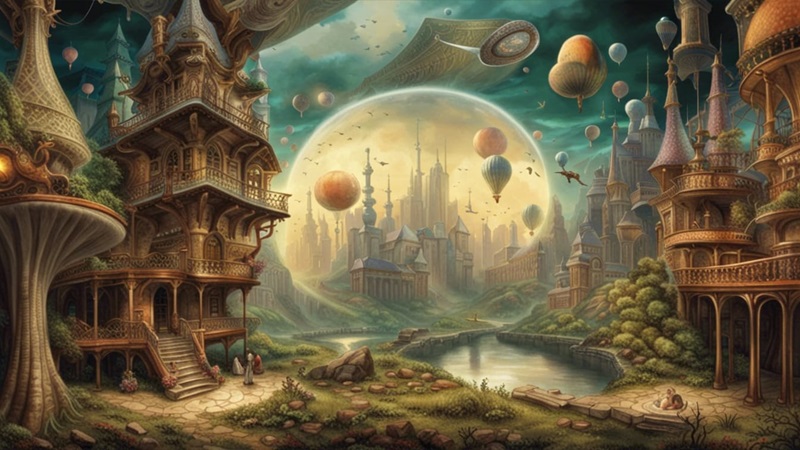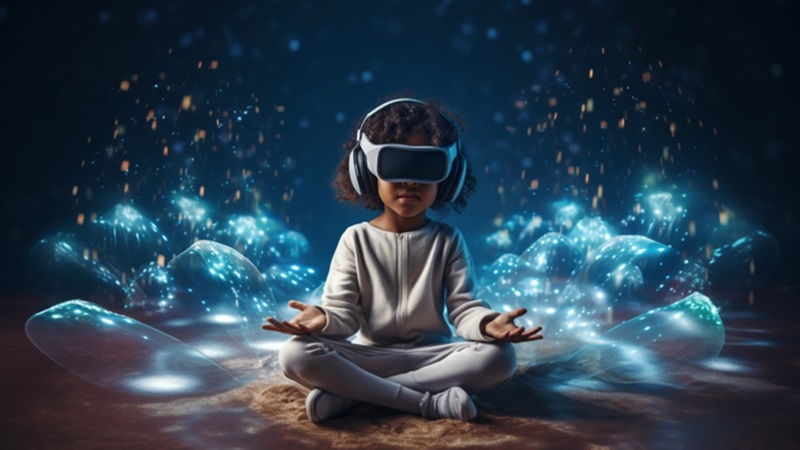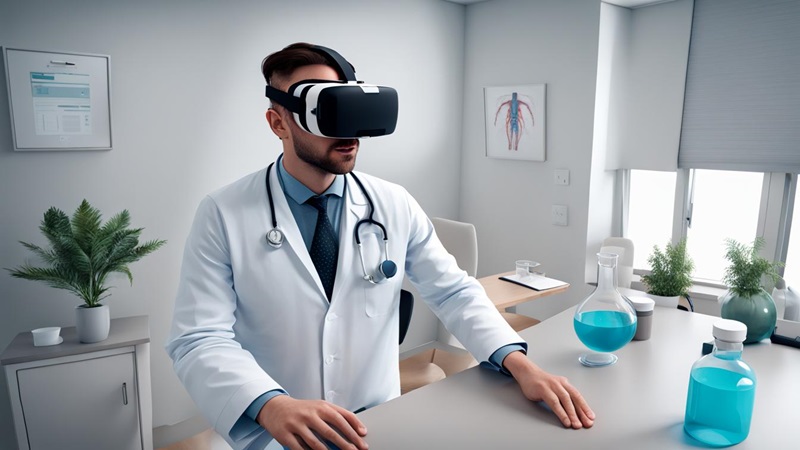What is VR? Introducing Virtual Reality
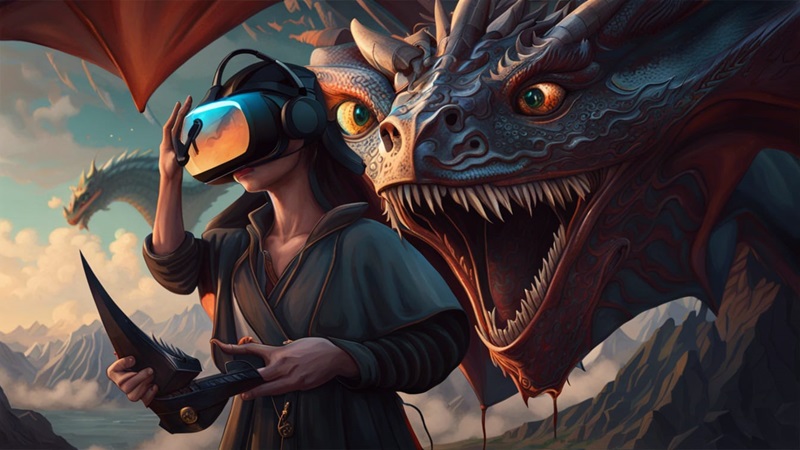
Imagine entering a parallel world where the boundaries of the real world disappear and immersion in another reality becomes possible.
This is the exciting world of virtual reality (VR), a technology that is changing the way we interact with our digital environments.
Introduction to the world of virtual reality
Virtual reality (VR) is a type of technology that provides users with simulated experiences, often through special glasses or headsets.
While this concept may seem futuristic, its foundations have been laid in various ways over the years.
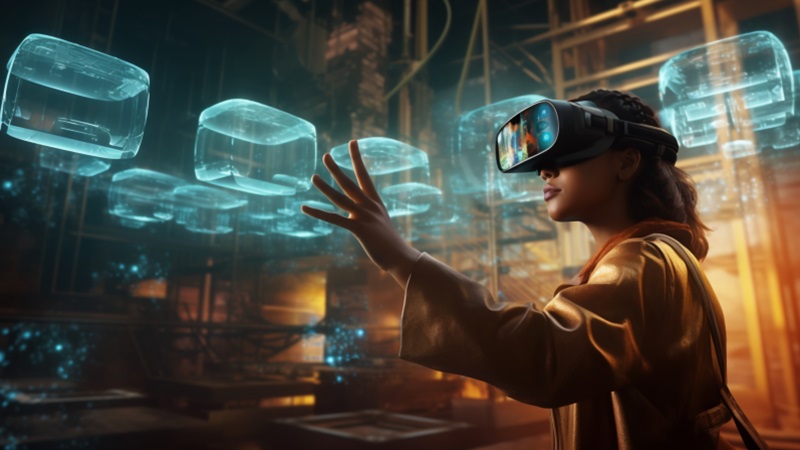
Defining and basic concepts
Essentially, VR creates simulations of reality, ranging from authentic recreations of our world to fantastical, imaginary environments.
This is achieved through the use of specialized hardware devices that synchronize sight and sound to create a consistent experience.
The development and history of virtual reality
Virtual Reality (VR) didn’t happen overnight. We remember the 1960s when pioneers like Ivan Sutherland and William Furness laid the foundations for the concept.
This was the moment when the idea of creating an alternative digital world took root.

Initial equipment and experiments
The 1980s brought us the first attempts to make mobile homes a reality.
Video games and simulations began to explore this technology. However, the equipment at that time was cumbersome and expensive, limiting public access.
The revolution of the 1990s and 2000s
During this time, VR gained wings with technological advances and increased computing power.
From interactive video games to military simulations and training applications, this era revolutionized the way we view and interact with VR.

On the road to modernity
The early 21st century brought major developments in VR.
Inexpensive devices such as the Oculus Rift and **HTC Vive **led to an explosion of interest and development in the technology.
From video games and movies to educational apps and medical simulations, VR has become an integral part of our digital lives.
Impact on modern technology
Innovations in virtual reality have contributed to the development of other technologies such as advanced computer graphics, motion detection and natural interactions.
This influence extends far beyond the world of video games, influencing fields from medicine and education to design and entertainment.
How virtual reality works technically
Sense of Presence
At the heart of VR technology is the concept of ‘presence’ - the ability to create the feeling that the user is physically present in a virtual environment.
This is achieved through a combination of elements such as advanced graphics, spatial sound and haptic feedback.
Essential Hardware
To deliver an immersive VR experience, the hardware must be powerful and accurate.
From motion tracking devices such as accelerometers and gyroscopes to intuitive controllers and haptic-feedback, every component contributes to the realism and interactivity of VR.
Advanced Display Devices
Display in VR requires special displays, usually inside virtual reality glasses.
OLED or LCD screens provide clear and detailed images. In addition, specialized lenses adjust the focal length, creating the illusion of depth and perspective.
Spatial and 3D sound
Sound contributes significantly to the sense of reality in VR.
Spatial audio systems and 3D audio technology allow users to identify and locate sound sources precisely around them, enhancing the auditory experience and adding another level of immersion.
Software and Applications
In addition to hardware, software is essential in VR technology.
From video games and educational simulations to design and collaboration apps, developers create a variety of content for different user needs.
Platforms like Unity and Unreal Engine have become crucial for VR content development.
User Interface in VR
Interaction in the VR world is facilitated by intuitive interfaces.
From simple gestures to voice commands, users can navigate and interact with the virtual environment in a natural way.
This paves the way for more complex and personalized experiences.
Various applications of Virtual Reality
An exciting aspect of VR is the diversity of its applications and its impact in different areas of everyday life.
Video Games and the Entertainment Industry
VR video games offer breathtaking immersion, placing the player in the middle of the action. From immersive adventures to realistic simulations, VR gaming is redefining the gaming experience.
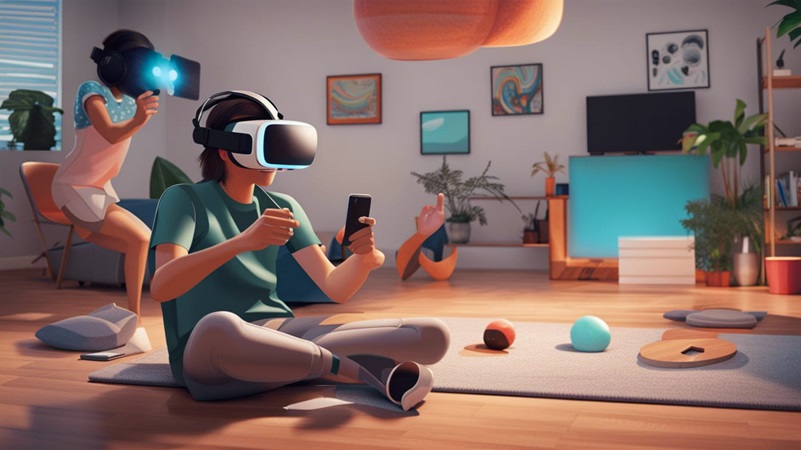
Health care and education
VR is changing the way we study anatomy and perform complex medical procedures.
VR applications in education create interactive and immersive learning environments.
Industry design and content production
VR affect the design and creation of digital content. Artists and creators are benefiting from this technology and bringing important innovations to the creative field.
***
Exploring these topics will give you a comprehensive understanding of virtual reality and how it is redefining the way we interact with the digital world. A journey into the world of VR is essential to understand the potential and impact of this technology on today’s society.

